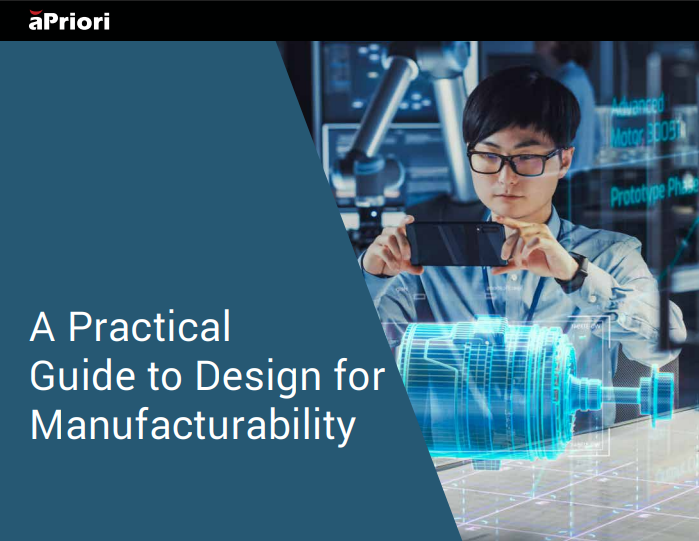Bridging the Gap Between Design and Profitability: A New Paradigm for Global Product Manufacturers
Key Takeaways:
- Profitability by Design: Embed real-time manufacturing insights into the user experience and design process to eliminate costly redesigns and ensure product profitability from the start.
- Accelerate Innovation: Free teams from rework cycles, allowing them to focus on true cutting edge innovation and bring new products to market faster to achieve greater competitive advantage
- Data-Driven Collaboration & ROI: Foster innovation ecosystems and achieve significant financial returns by using a single source of truth for critical data across the organization.
Introduction
In a world where speed to market and profitability are non-negotiable, the traditional approach to product development workflows is no longer sufficient. For senior executives in product design and engineering looking for competitive advantage, the challenge is clear: how do you foster radical innovation without getting bogged down in an endless cycle of redesigns and costly manufacturing delays? The “design-then-cost” model, where an innovative breakthrough is thrown over the wall to manufacturing and procurement teams, is a relic of the past. It’s a process rife with friction, creating bottlenecks that drain resources, delay launches, and ultimately, erode a product’s profitability.
Imagine a product development process where every design choice is made with full knowledge of its real-world impact. Where manufacturability, cost, and even sustainability are not afterthoughts but are embedded into the very fabric of the creative process. This is the new paradigm driven by Manufacturing Intelligence, and it represents a profound shift in how products are brought to life. It’s the difference between guessing at profitability and designing for it from day one.
The Hidden Costs of the Old Paradigm
The conventional product development process is a minefield of potential problems. An engineer may spend weeks perfecting a design, only to have it rejected by the procurement team for being too expensive, or by the manufacturing team for being too complex to produce efficiently. The ripple effect is devastating. Each iteration of rework and each round of negotiation adds days, weeks, or even months to the product timeline. This not only delays revenue but also allows competitors to gain an advantage. These hidden costs of inefficiency—from wasted engineering hours to missed market opportunities—can be far more damaging than the initial production costs themselves.
Manufacturing Intelligence, powered by platforms like aPriori, provides a direct remedy to this. It integrates seamlessly into existing CAD environments, giving designers a powerful, real-time view of the estimated manufacturing cost and time implications of their choices. By simulating the entire manufacturing process within a “digital factory,” the technology provides instant feedback on the cost drivers, manufacturability issues, and material utilization of a design. For the first time, designers are empowered to explore different materials, tolerance specifications, and manufacturing processes, with immediate, data-driven insights. This real-time, continuous feedback loop closes the costly gap between design intent and manufacturing reality, eliminating the need for expensive, late-stage surprises and the subsequent redesigns that follow.
Accelerating Innovation and Cultivating a Collaborative Culture
Beyond simply cutting costs and reducing rework, this new approach fundamentally transforms the innovation cycle. When designers are no longer constrained by the fear of creating an unmanufacturable or unprofitable product, they are freed to be more creative and experimental. The time once spent on frustrating redesigns is now channeled into exploring new ideas and pushing the boundaries of what is possible. This acceleration of the design-and-iterate cycle is not just an operational improvement; it’s a strategic competitive advantage. It allows companies to bring more innovative products to market faster than ever before.
This technology also acts as a powerful catalyst for collaboration across the entire organization. By providing a single source of truth for cost, manufacturability, and sustainability data, it breaks down the traditional silos between design, engineering, procurement, and manufacturing teams. When a designer makes a change, everyone on the team can immediately see the impact. This shared understanding prevents conflicts and promotes a unified focus on achieving a common goal: creating the most profitable, manufacturable, and innovative product possible. This proactive collaboration minimizes wasted time and helps teams converge on the best solutions much faster, ensuring a smooth and efficient journey from the drawing board to the production floor.
A Strategic Imperative for Sustainable Growth and ROI
In an age where corporate responsibility and sustainability are increasingly important, Manufacturing Intelligence provides more than just financial benefits. It offers the data needed to make informed choices about a product’s environmental footprint. With the ability to model the carbon emissions of different materials and manufacturing processes, companies can meet and even exceed their sustainability goals, turning a moral imperative into a strategic advantage.
The impact on the bottom line is undeniable. According to a Forrester study, customers using aPriori’s platform have realized a staggering 603% return on investment (ROI) over three years, alongside a 10% reduction in procurement spend and up to a 70% increase in design efficiency. These aren’t just statistics; they are a testament to the profound shift that occurs when manufacturing insights are placed in the hands of those who can make the most impactful changes—the designers and engineers at the beginning of the product lifecycle.
Summary
For senior executives, this is a clear strategic imperative. By investing in Manufacturing Intelligence, you are not just purchasing software; you are transforming your organization into a leaner, more agile, and more profitable enterprise. You are reclaiming your teams’ valuable time, boosting the profitability of every product, and ensuring that your company is not just keeping pace with the market, but leading it. The future of manufacturing is here, and it’s being built on a foundation of data, collaboration, and profitability by design.
Eliminate Costly and Time Consuming Rework with Design for Manufacturability
DFM helps identify manufacturing issues early in the design cycle
More Resources:
Other Resources:
- Video: How Dana Realized a $4M Savings in Their First Year
- Technology: Automated Insights with aP Design
- Why aPriori? What Are Some of aPriori’s Unique Differentiators?








